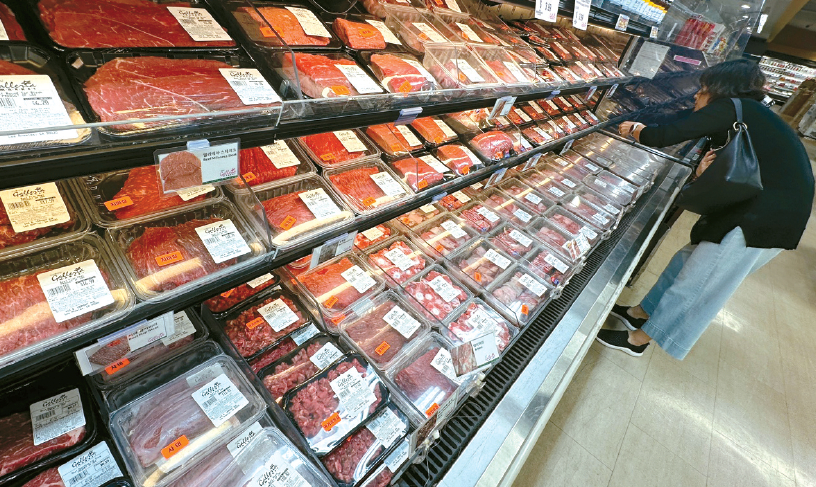According to the Bureau of Labor Statistics (BLS), steak prices have increased by 7% and ground beef by 10% over the past year. As of April, the average price of ground beef reached $5.80 per pound, up nearly 50% from five years ago. Premium cuts such as chuck flap and sirloin have also steadily risen.

At the Chicago Mercantile Exchange (CME), live cattle futures are trading at $2.15 per pound, marking a 12% increase since the start of the year and a 22% jump from a year ago.
Wholesale beef prices have also gone up approximately 10% year-over-year, according to Korean American meat distributors.
In December 2022, wholesale LA galbi (Korean-style short ribs) was priced at $7.70 per pound; it now costs around $7.80, with choice-grade cuts reaching $8.89. These increases are reflected in retail prices at Korean grocery stores.
Consumers are now paying $13.99 to $14.99 per pound for LA galbi, $14.99 to $19.99 for brisket, and $9.99 to $10.99 for shank. Prices have climbed by about $1 in just two to three months. Flank steak for grilling has surged nearly 30%, now selling for $24.99 to $25.99 per pound.
Five years ago, LA galbi sold for $9.99 per pound, or $7.99 during sales. Compared to today’s prices, that marks an 88% increase.
Some Korean markets attempted to draw customers during Memorial Day weekend with $1 discounts on LA galbi, but response was tepid. “Sales of LA galbi during the holiday weekend were less than half of what they were three or four years ago,” said a market representative.
Youngkyo Kim, head of the meat department at Hannam Chain, added, “We check wholesale prices daily since beef prices are constantly rising. If the wholesale increase is under a dollar, we absorb the cost rather than raise retail prices.”
According to the industry, customers now rarely buy more than one pack of marinated short ribs, and bulk orders from churches or community groups have declined.
Experts attribute the beef price surge to a range of supply-side issues. Ongoing drought, rising feed and operating costs, and herd reductions have worsened supply-demand imbalance. USDA data shows the U.S. cattle population has dropped to 86.7 million head, the lowest since 1951.
Even if ranchers begin rebuilding herds now, it takes 18 to 24 months for calves to reach slaughter weight.
Adding to the pressure is the Trump administration’s new trade policy, which has raised tariffs on beef imports from Canada, Mexico, and other countries. The added import costs are feeding into both wholesale and consumer prices.
Steven Kirkland, a rancher near Fort Worth, Texas, said, “Last year, I paid $1,500 per cow. Now it’s over $2,400. Feed, transportation, and labor costs are all up, making price hikes at slaughterhouses inevitable.”
Market experts warn that the current supply shortage and high prices may persist through 2026, with stabilization likely in the third quarter of that year.
BY EUNYOUNG LEE [lee.eunyoung6@koreadaily.com]




